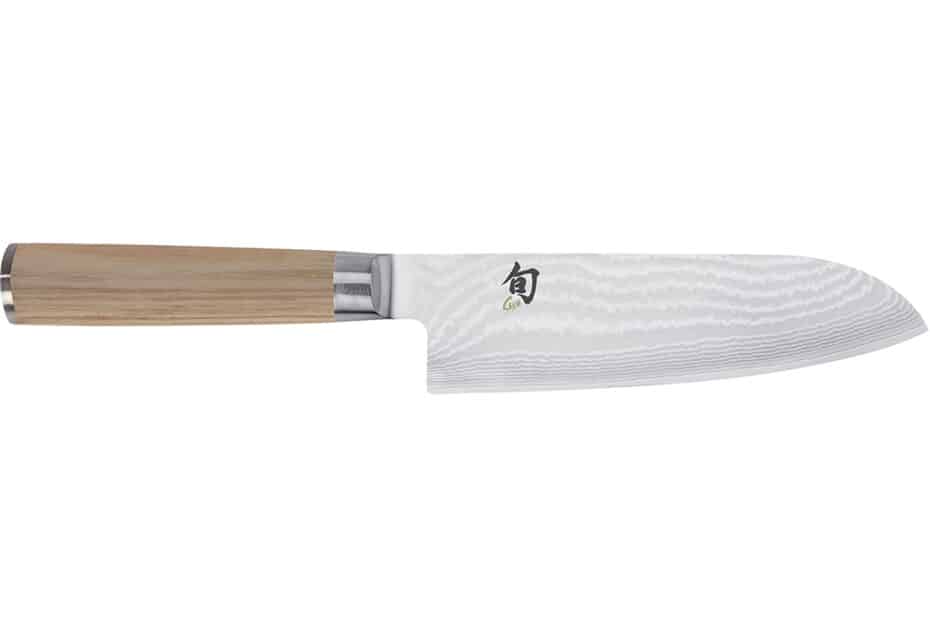With a lineage dating to samurai swords, santoku knives evolved from weapons of the battlefield to indispensable and versatile tools in the kitchen.
This article covers the history of santoku, how to use it, its size, shape, and more.
What is a Santoku Knife?
The Santoku knife (三徳包丁), known as “three virtues” or “three uses” in Japanese, is a versatile kitchen knife with a flat edge and a sheepsfoot blade. It can handle various ingredients and tasks such as slicing, chopping, and dicing.
The santoku originated in Japan in the 1940s and has a shorter, lighter, and thinner design compared to traditional Western chef’s knives, though it shares their double bevel blade design. It incorporates a sheep’s foot tip and often features laminated steels or damascus patterns. Some non-Japanese copies of Santoku knives exist but may have different designs and materials.
Another name for the santoku is bunka (文化)
How to Pronounce Santoku
“Santoku” sounds akin to ‘sudoku’ puzzles, with ‘san’ pronounced similarly to ‘sauna’, emphasizing the first syllable.
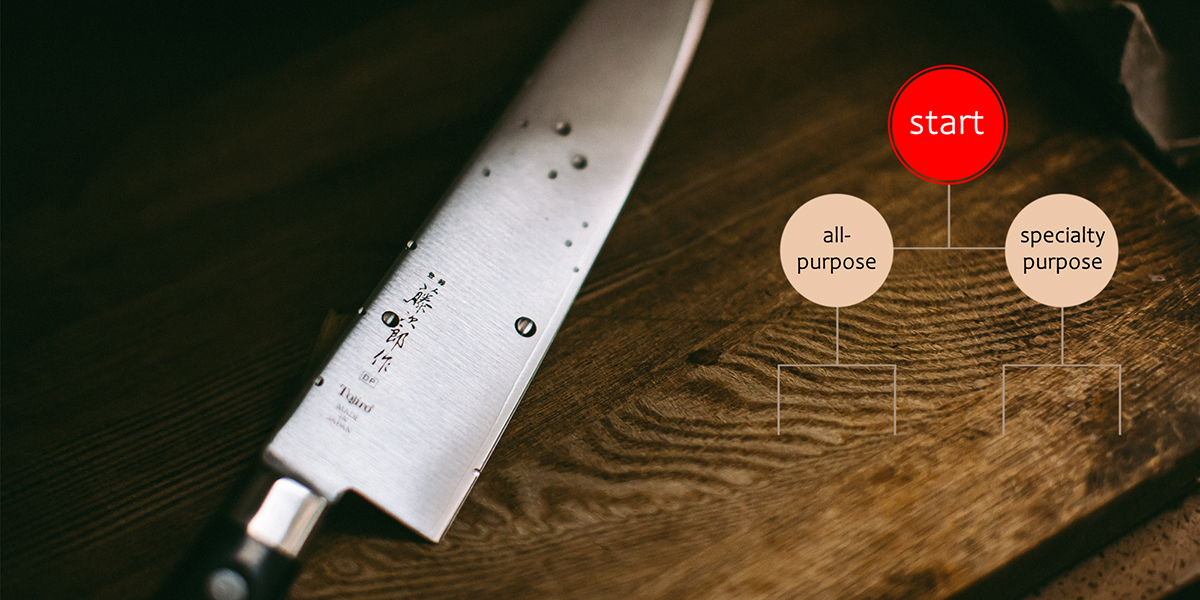
Want to find your forever knife?
Download my free Japanese kitchen knife finder.
This simple cheat sheet will guide you to the knife type
that best suits your needs.
History of Santoku Knives
Santoku knives can trace their lineage back hundreds of years, but they didn’t emerge in their current form until after WWII.
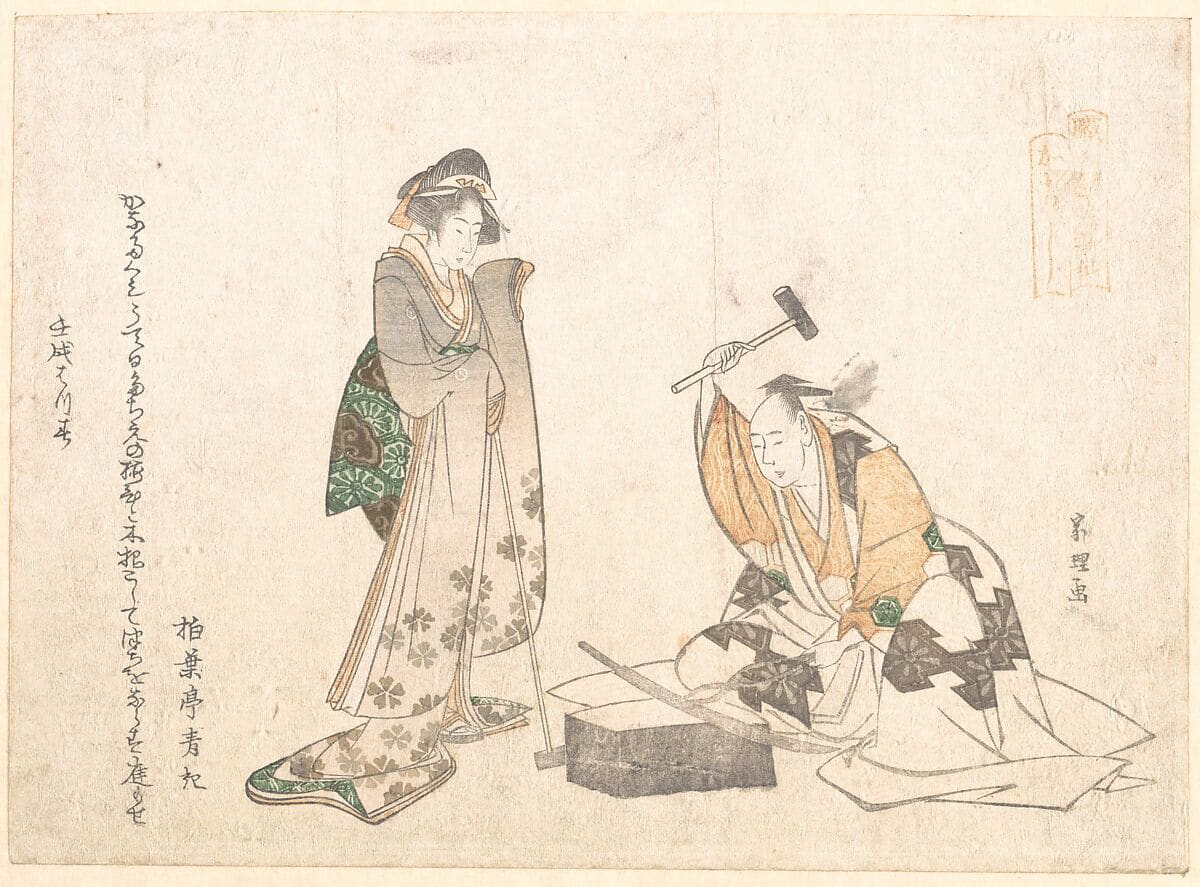
Ancient Origins
The origins of Japanese knives, including the Santoku, can be traced to the art of swordsmithing during the feudal era.
Skilled craftsmen known as “tosho” dedicated their lives to perfecting the craft of sword-making for samurai warriors. These blades required exceptional sharpness, durability, and balance, and the techniques developed by these master swordsmiths formed the foundation for the evolution of Japanese knives.
Samurai’s craft, refined,
Forged blades of legend and might,
Kitchen’s katana.
Transition to the Kitchen
With the decline of samurai culture during the Edo period (1603-1868), the demand for swords diminished. Consequently, the skilled artisans sought new ways to utilize their expertise.
Many swordsmiths transitioned their craftsmanship to creating kitchen knives, capitalizing on their knowledge of metallurgy, forging techniques, and blade geometry.
The Emergence of Santoku
Santoku knives originated in the Kansai region around the 1940s. They were born out of the necessity to meet the demands of a changing culinary landscape and the introduction of Western and Asian cuisines.
During the post-World War II era, Western cuisine influenced Japanese cooking styles more than ever before. This shift necessitated a knife that could handle a broader range of tasks, including slicing, dicing, and chopping. This led to the birth of the Santoku knife, which translates to “three virtues” or “three uses” in Japanese, referring to its ability to handle meat, fish, and vegetables with equal ease.
Global Influence
In recent decades, Japanese knives, including Santoku, have gained immense popularity worldwide. Their exceptional cutting performance, ergonomic design, and rich historical heritage have captivated professional chefs and cooking enthusiasts.
The artistry and precision handed down from the days of the samurai continue to shape the reputation of Japanese knives as some of the finest culinary tools available.
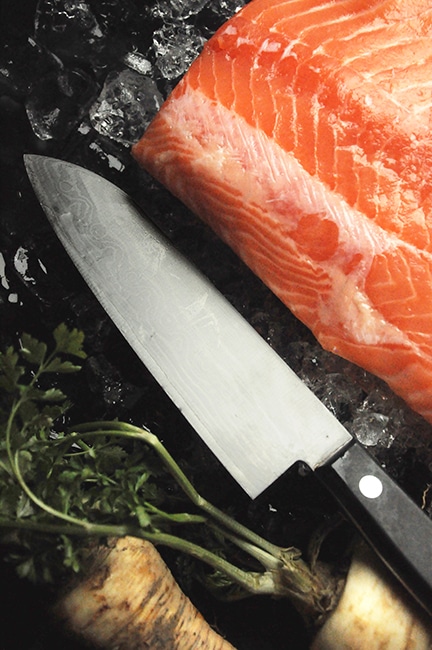
Santoku: The Three Virtues
The name “Santoku” itself holds historical significance. Translating to “three virtues” or “three uses” in Japanese, Santoku knives were designed to excel at three primary tasks: slicing, dicing, and mincing. This versatility made them ideal for preparing a wide array of ingredients, including meat, fish, and vegetables while embodying the spirit of efficiency and functionality.
Santoku’s three ways,
Three virtues wielded with grace,
Efficiency’s dance.
Craftsmanship and Cultural Heritage
Santoku knives owe their exceptional quality to the meticulous craftsmanship handed down from generation to generation. Skilled artisans, known as “kaji,” employ traditional techniques such as “honyaki” (forging from a single piece of high-carbon steel) or “kasumi” (forge-welding high-carbon steel with soft iron) to create blades of exceptional sharpness, balance, and beauty. This commitment to craftsmanship preserves the cultural heritage and reverence for the art of Japanese knife-making.
Santoku Knife Size and Features
Santoku knives are characterized by their unique blade profile. Unlike Western chef knives, Santoku knives have shorter, wider blades with a flat edge and a rounded tip. The blade is typically crafted from high-quality stainless steel or Damascus steel, known for its exceptional sharpness and durability. The hollow edge or granton edge design minimizes food sticking to the blade, making it ideal for precision slicing and chopping.
Most santoku knives have blades ranging from 5.5 to 7 inches in length. Overall length typically ranges from 10.5 to 12 inches. Moreover, the majority of santoku knives weigh approximately 5 to 8 ounces.
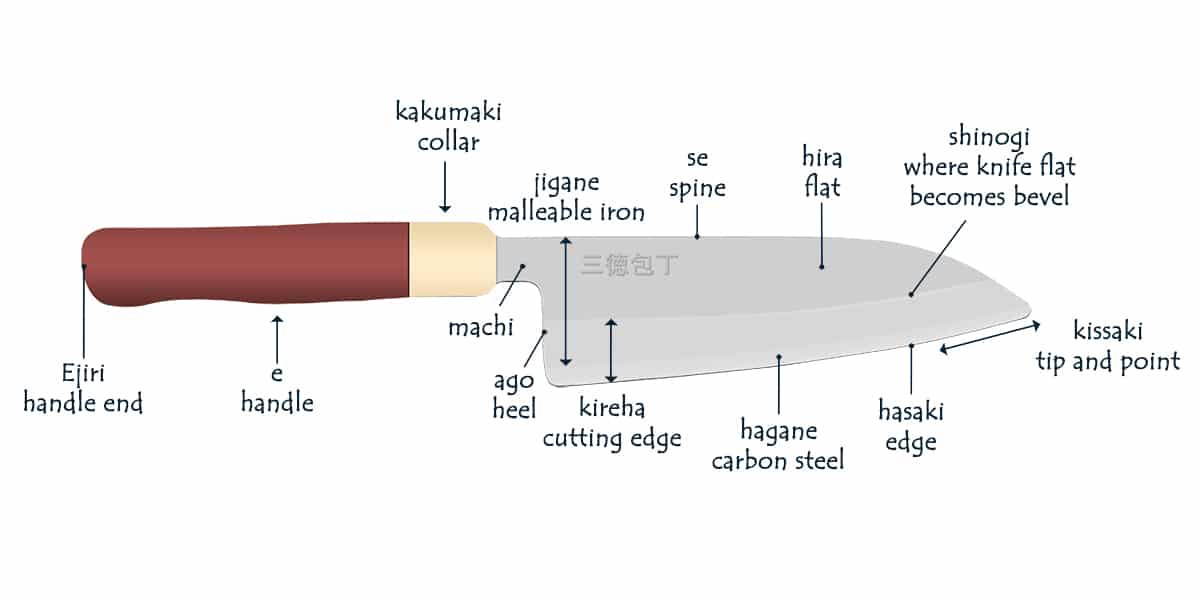
Santoku Uses
Santoku knives offer versatility in the kitchen, capable of handling a range of tasks including slicing, dicing, and chopping.
While they excel in these general-purpose applications, it’s worth noting that there are more specialized Japanese knives that may outperform Santoku knives in specific tasks. Knives like the Yanagiba for slicing sashimi or the Deba for heavy-duty fish butchery have their unique strengths.
However, for those seeking a single, all-around knife that can handle various ingredients and techniques with proficiency, the Santoku remains an excellent choice.
Santoku Prices
The price range of Santoku knives can vary depending on factors such as brand, materials used, craftsmanship, and overall quality.
Entry-level Santoku knives can be found in the range of $20 to $50, offering decent performance for everyday kitchen tasks. Mid-range options typically range from $50 to $150, offering better materials and craftsmanship. High-end Santoku knives, often handcrafted and made with premium materials, can range from $150 to several hundred dollars or more.
Gyuto vs Santoku
Gyuto and Santoku knives differ in blade length, versatility, and cutting techniques. Gyuto offers a longer, narrower blade and is ideal for rocking motions, while Santoku has a shorter, wider blade suitable for versatile tasks.
To explore their distinctions further, check out my Gyuto vs. Santoku knife article (COMING SOON).
Conclusion
The history of Santoku knives stretches far beyond their popularization in the 17th century. Rooted in the legacy of samurai sword-making, these knives have evolved into exquisite culinary instruments, combining functionality, craftsmanship, and cultural heritage.
Whether in the hands of a chef or an avid home cook, the Santoku knife serves as a testament to Japan’s rich tradition of craftsmanship and remains a symbol of culinary excellence worldwide.
You may also like:
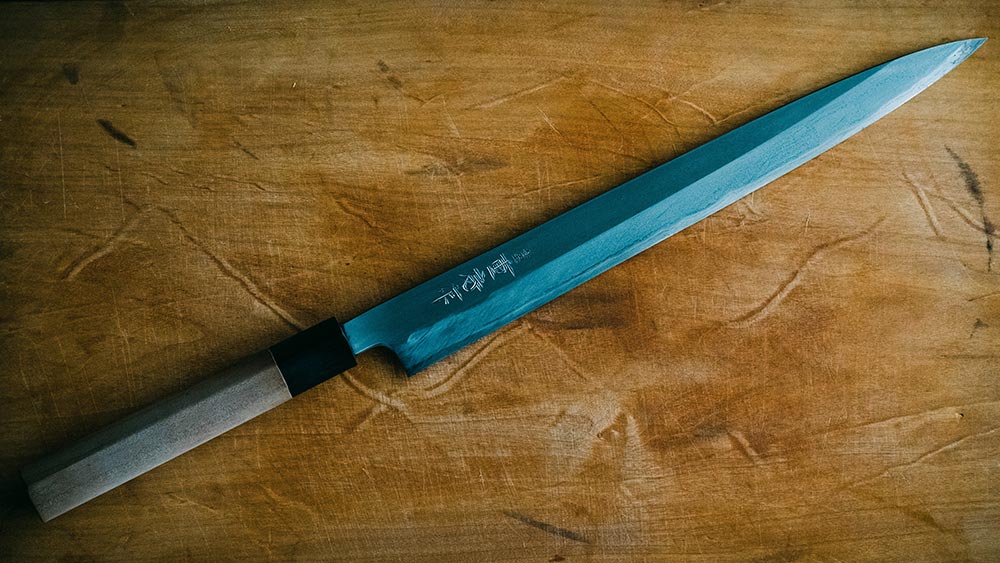
Intro to Japanese Kitchen Knives
Japanese kitchen knives are among the world’s finest. But with all of the different types and materials, selecting the right one can be overwhelming.
So I wrote this guide to give you (and myself) a proper foundation. I cover the different types of knives, materials, history, and proper care. Click the button below to get started.

Brad Smith
I fell in love with Japanese cuisine nearly two decades ago and soon landed my first Japanese restaurant job. Many years later, I created this site to geek out on Japanese food and beverage.
I love learning and my professional certifications include the J.S.A. Sake Diploma, Certified Sommelier (CMS), Certified Sake Advisor (SSA), Certified Shochu Advisor (SSA), Certified Specialist of Spirits (SWE), and Certified Beer Server (CCP).
Check out my about page to learn more.
